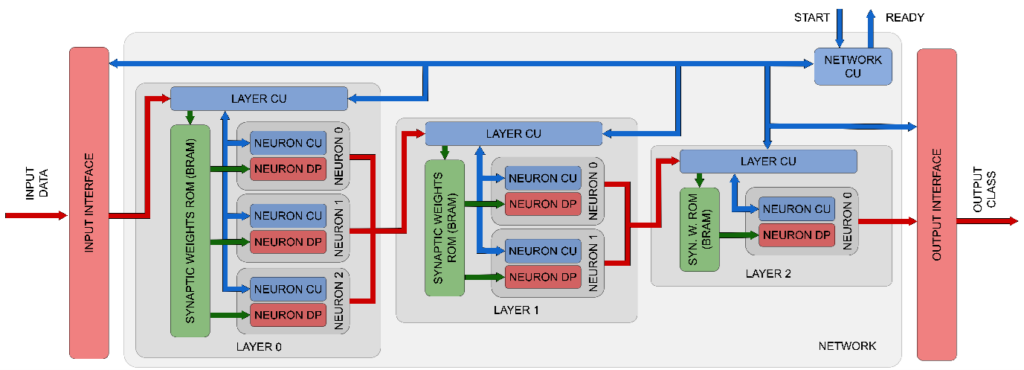NEUROMORPHIC COMPUTING: Rethinking Computing through Brain-Inspired Architectures
At the SMILIES group, we explore neuromorphic computing as a radical approach to overcoming the limitations of conventional architectures. By drawing inspiration from the structure and functionality of the human brain, our research aims to design energy-efficient, robust, and adaptive computing platforms tailored for edge intelligence and embedded AI.
SPIKING NEURAL NETWORKS
Bring AI one step closer to the brain—efficient, event-driven, and biologically inspired.
Learn more!

Funded Projects
- NEUROPULS founded by European Union’s Horizon Europe research and innovation programme. It aims to develop, for the first time, secure hardware accelerators based on novel neuromorphic architectures and PUF-based security layers leveraging the benefits offered by the integration of photonics, PCMs, and III-V materials. This integration will provide superior security, energy-efficiency, and speeds for spiking and formal recurrent NNs when compared to current available technology for the selected use-cases.
Repositories on GitHub
- Spiker: FPGA hardware accelerator for Spiking Neural Networks (SNN)
- SpikExplorer: Automatic Design Space Exploration (DSE) for Spiking Neural Networks (SNN)
- SpikingJET: Automatic fault-injection in Spiking Neural Networks (SNN)
- Continual learning in SNN:Optimized continual learning in Spiking Neural Networks (SNN)
Publications
- A. Carpegna, A. Savino and S. Di Carlo, “Spiker: an FPGA-optimized Hardware accelerator for Spiking Neural Networks,” 2022 IEEE Computer Society Annual Symposium on VLSI (ISVLSI), Nicosia, Cyprus, 2022, pp. 14-19. https://doi.org/10.1109/ISVLSI54635.2022.00016
- Padovano, D.; Carpegna, A.; Savino, A.; Di Carlo, S. SpikeExplorer: Hardware-Oriented Design Space Exploration for Spiking Neural Networks on FPGA. Electronics 2024, 13, 1744. https://doi.org/10.3390/electronics13091744
- B. Göğebakan, E. Magliano, A. Carpegna, A. Ruospo, A. Savino and S. D. Carlo, “SpikingJET: Enhancing Fault Injection for Fully and Convolutional Spiking Neural Networks,” 2024 IEEE 30th International Symposium on On-Line Testing and Robust System Design (IOLTS), Rennes, France, 2024, pp. 1-7. https://doi.org/10.1109/IOLTS60994.2024.10616060
Lorem ipsum dolor sit amet, consectetur adipiscing elit. Ut elit tellus, luctus nec ullamcorper mattis, pulvinar dapibus leo.
